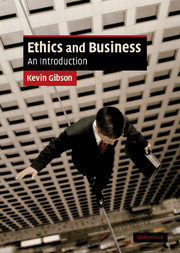Book contents
1 - An overview of business ethics
Published online by Cambridge University Press: 05 June 2012
Summary
The Bhopal disaster
While most of the population slept during the night of December 3, 1984, a toxic cloud of over forty tons of methyl isocyanate (MIC) gas escaped from the Union Carbide plant in Bhopal, central India. Heavier than air, the gas blanketed the slums surrounding the facility and spread over the city of 800,000 people. At least 2,000 died immediately, although local estimates run into the tens of thousands.
Over twenty years later, there is still an arrest warrant out in India for Warren Anderson, the CEO of Union Carbide at the time, on a charge of culpable manslaughter. The plant, long defunct, has polluted the local aquifers with carcinogens and exposed open puddles of toxic waste. Local municipal workers tend to the area without any protective gear. Medical reports indicate that residents have compromised immune systems, growth retardation, miscarriage rates seven times the national average, and widespread incidence of cancer. Up to half a million people are said to be debilitated by chronic illness.
A decade before the disaster, India had actively solicited investment by foreign companies and formed a joint venture with Union Carbide (UCC) to build a plant producing Sevrin, a common pesticide. However, by the early 1980s the Bhopal facility was operating at one-quarter of its capacity, due to poor harvests and reduction in the capital available to farmers. In 1982 a visiting UCC team declared the factory unsafe.
- Type
- Chapter
- Information
- Ethics and BusinessAn Introduction, pp. 1 - 26Publisher: Cambridge University PressPrint publication year: 2007



